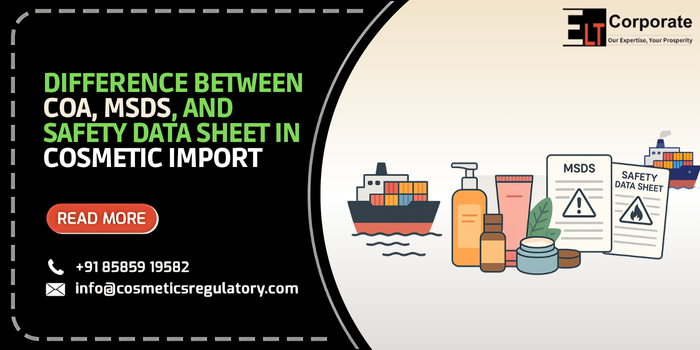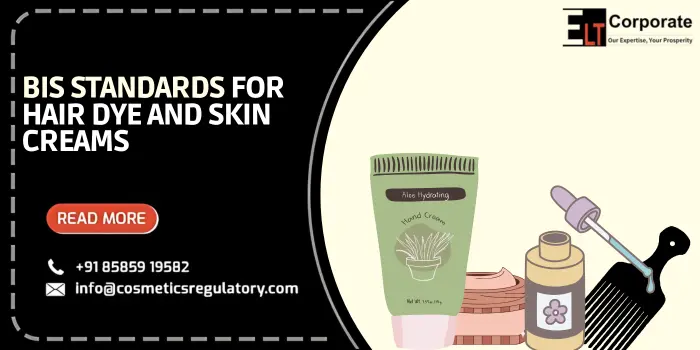Officials not only check your packaging and label while importing cosmetics in India, or in any other regulated market. They also need to see evidence that your product supply is safe, orderly and properly handled at every stage of the process. This is the place where compliance documents such as Analysis Certificate (COA), Material Safety Data Sheets (MSDS), and Safety Data Sheets (SDS) are in the game.
While these words are often used in mutual, each document provides a different purpose and is required in different stages of cosmetic imports. Confusion with each other may cause customs delays, product recovery, or even rejection of your cosmetic import license.
Table of Contents
ToggleWhat is a Certificate of Analysis (COA)?
A COA is essentially the “quality report card” of a cosmetic product or component. This confirms that the product has been tested and meets the required standards. Major elements of COA in cosmetics: Released by: Manufacturer or a recognised third-party laboratory. Batch-specific: Each batch of imported cosmetics must have a separate COA. Material:- Product/component name and batch number.
- Testing methods were used.
- Results for microbiological tests, heavy metal limits, pH values, active materials and contributors.
- Test and certification authority date.
What is a material safety data sheet (MSDS)?
MSDS is a safety document that provides detailed information about the chemical composition of a product and its potential hazards. Traditionally, MSDS was a global format before adopting the modern SDS system under GHS (globally harmonious system classification and labelling of chemicals). Major features of MSDS:- Chemical identity lists physical and chemical properties.
- The first aid provides measures, the firefighting methods and contingent release guidelines.
- Poisoning, reaction and disposal indicate instructions.
- Helps to ensure safe handling, storage and transportation.
What is a Safety Data Sheet (SDS)?
SDS update, an internationally standardised format that replaces MSD under the UN GHS guidelines. Many regulators, including the European Union and India, now recognise SDS rather than MSDS. Major features of SDS:- 16 standardised sections (identity, dangerous information, composition, first-aid, fire fighting, casual release, handling, storage, exposure control, stability, toxic science, ecological information, disposal, transport, regulatory information and other information).
- Globally consistent threats provide communication.
- Compulsory for any cosmetic component or dangerous chemical formation (even in small amounts).
- MSDS = Old format (diverse structure, low standardised).
- SDS = current global format (uniform, detailed, required by many regulators).
COA vs MSDS vs SDS: A Quick Comparison
| Aspect | COA | MSDS | SDS |
| Purpose | Confirms product quality & compliance | Provides safety & hazard info | Provides standardised hazard & safety info (GHS) |
| Focus | Quality assurance | Hazard communication (old system) | Hazard communication (new global standard) |
| Issued By | Manufacturer or lab | Manufacturer or supplier | Manufacturer or supplier |
| Batch-Specific? | Yes | No | No |
| Use in Cosmetics | Customs clearance, regulatory approval | Handling, storage, and shipping safety | Handling, storage, and shipping safety (mandatory under GHS) |
Why Importers Must Know the Difference
For cosmetic importers, mixing up these documents can cause compliance delays:- COA is crucial for every imported batch to prove product conformity.
- MSDS/SDS ensures safe transportation and handling, especially for ingredients.
- Regulatory compliance for cosmetics may require COA and SDS during licensing or inspection.



